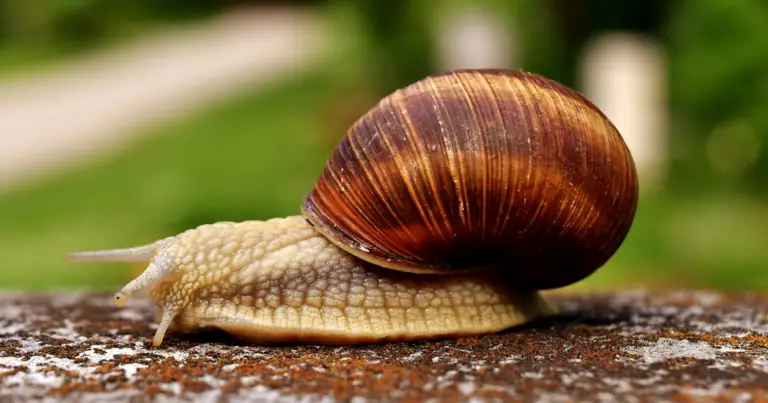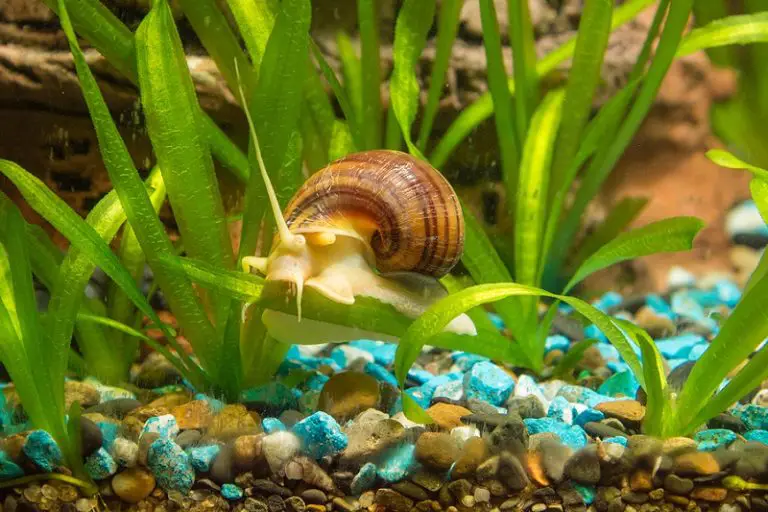Why Are Snails Slow?
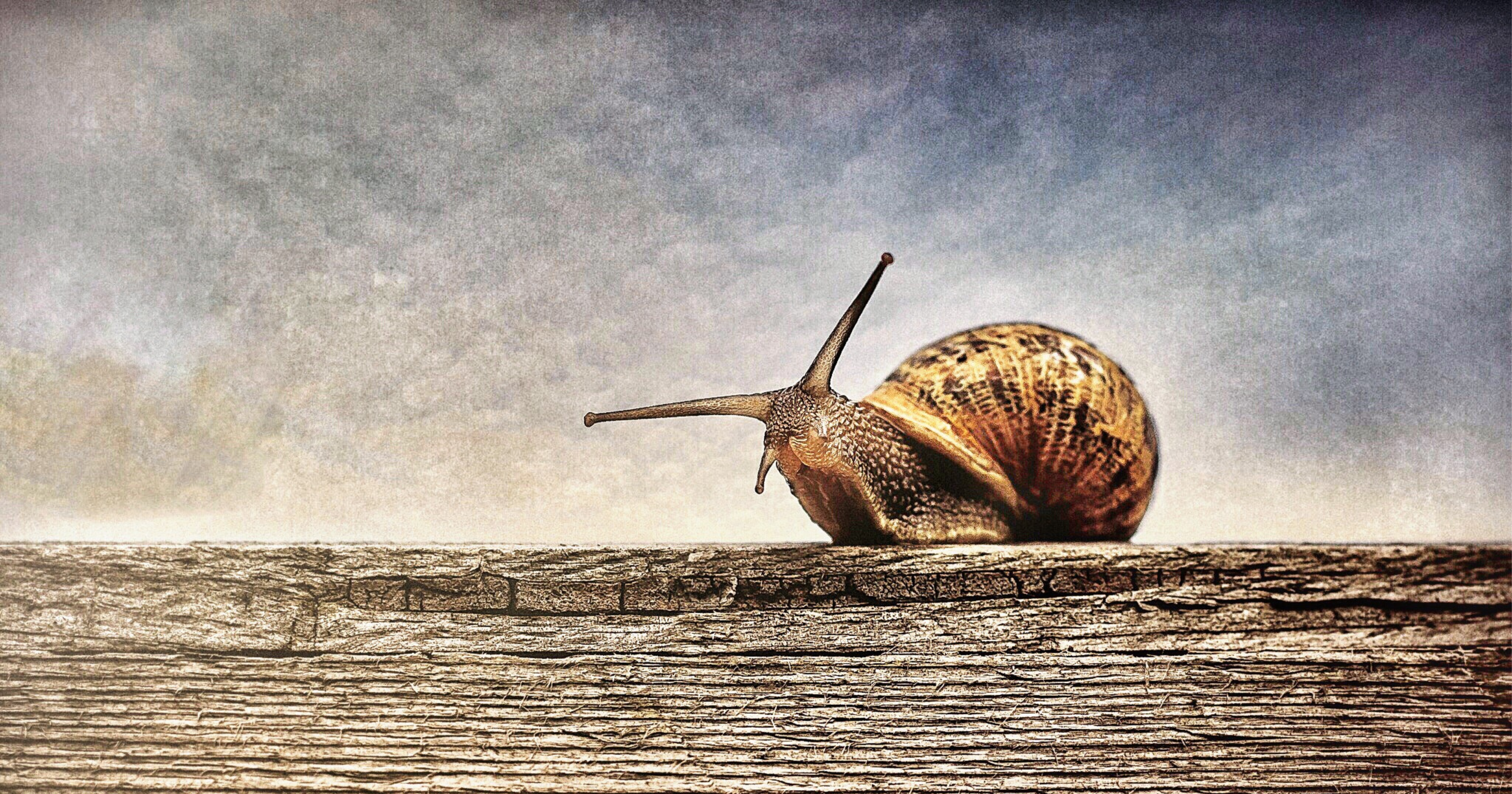
You may have wondered, “Why are snails slower than other creatures?” The primary reason behind their slow pace is their unique method of movement. Snails lack legs, unlike many animals, so they rely on muscular contractions along their single foot. This “ventral foot” is their primary way of getting around, but it isn’t the fastest method.
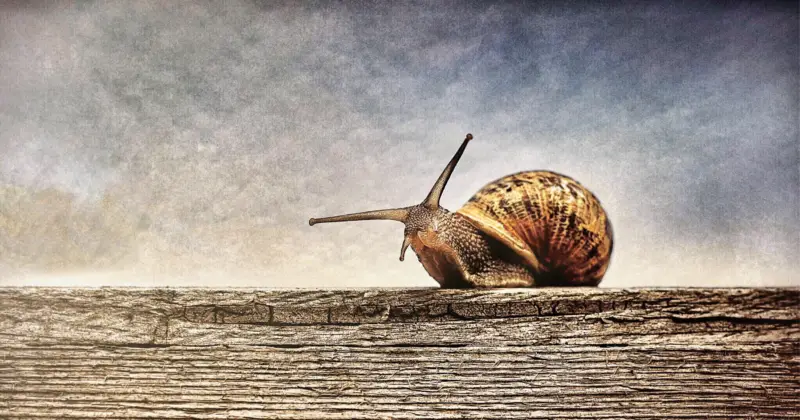
In addition to the unusual movement, snails secrete a slimy mucus that helps reduce friction as they slide across surfaces. Although this mucus is useful for smooth and steady movement, it doesn’t do much to increase their speed. The combination of their anatomy and the need for lubrication creates a natural constraint that keeps them moving leisurely.
Being slow might seem like a disadvantage, but it also benefits snails. Their slow movement conserves energy, which is crucial due to their nutrient-poor diet. The lack of speed also helps them avoid predators by keeping a low profile. As you learn more about these fascinating creatures, you will discover that their seemingly slow pace is crucial to survival.
Contents
Table of Contents
Understanding Snail Anatomy
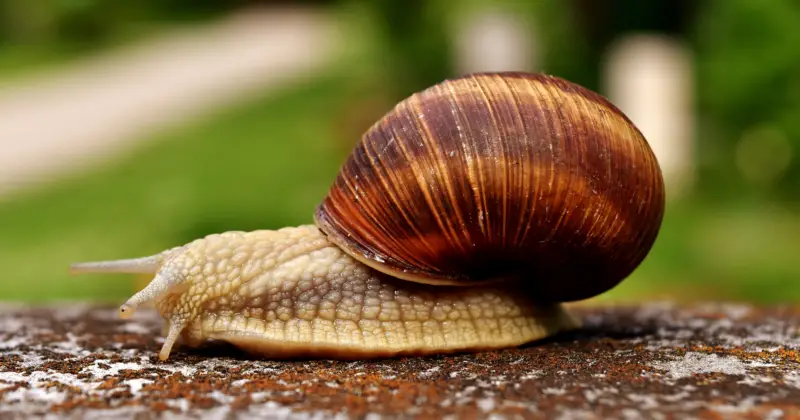
Muscular Foot
Snails possess a muscular foot, a broad and flat surface, which allows them to glide across surfaces. The muscular foot constantly contracts and expands in a wave-like motion. This enables the snail to move forward in a slow, steady manner.
The snail secretes a mucus-like substance from its foot, reducing friction and allowing you to see a trail left behind by them. Being soft-bodied creatures, their muscular foot cannot generate rapid movement, thus contributing to their slow velocity.
Shell and Its Impact
A snail’s shell comprises approximately 30% of their body weight and is primarily made of calcium carbonate. The large shell protects their soft bodies and internal organs, helping them withstand various environmental challenges.
However, the heaviness of the shell impacts the snail’s mobility, requiring them to exert more energy and move at a slower pace. Consequently, snails usually travel at speeds less than 8 cm per minute, making them one of the slowest creatures on Earth.
Respiratory System
Snails have a unique respiratory system, which varies depending on their habitat and greatly influences their movement. Many terrestrial snails breathe through a lung, utilizing a small hole called a “pneumostome” to exchange air.
This respiratory system is not adapted for quick movement, requiring constant oxygen intake to maintain muscular activity. Therefore, snails relying on this system cannot rapidly increase their speed or maintain high exertion for extended periods.
Snail Speed: A Closer Look

Way of Locomotion
Snails are slow-moving creatures; their unique locomotion contributes to their slow pace. Unlike creatures with legs, snails depend on their muscular foot and mucus to move. This plays a significant role in determining their speed.
Snails crawl leisurely than a car, which can cover large distances at high speeds. Their large shells, which comprise about 30% of their body weight, also play a part in their limited mobility. As a result, snails move at speeds less than 8cm per minute.
It’s important to consider the snail’s low metabolic rate. Their metabolism is roughly one-tenth that of similar-sized creatures, allowing them to survive for years without food. This physiological adaptation affects their overall movement and energy expenditure.
Distance Covered
When assessing a snail’s slow pace, putting the distance covered into perspective is essential. While snails may not be the slowest animals on Earth (a title held by the three-toed sloth and starfish), their ability to cover the distance is minimal. An average snail’s speed is about 0.03 miles per hour.
However, some snails can move a little faster. For example, the world’s fastest terrestrial snail, Archie, was recorded at a speed of 0.06 miles per hour, twice the speed of an average snail. While this is still considered slow compared to other animals, it highlights some variability in snail speeds.
In conclusion, snails are slow-moving creatures due to their unique way of locomotion, large shells, and low metabolic rates. All these factors contribute to their leisurely movement and limited ability to cover long distances.
Why Are Snails Slow?
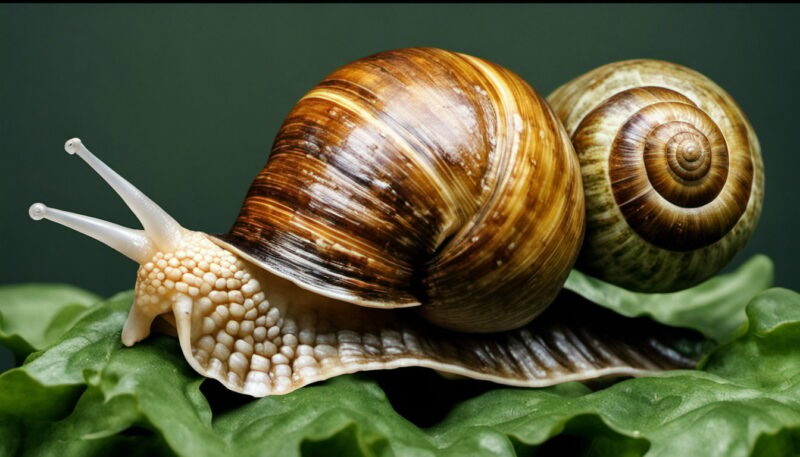
Energy Conservation
As a cold-blooded mollusk, snails have a slow metabolism, resulting in slower movements. Their diet consists mainly of leafy greens that provide low energy, causing them to conserve energy as much as possible. Moving slowly helps snails to efficiently use their limited energy resources and maintain a sustainable lifestyle.
Environment and Habitat
Snails are experts at adapting to their environment. They secrete a slimy mucus that helps them reduce friction while moving, essential for survival in various habitats. Snails move cautiously in moist and humid environments to avoid dangers under wet leaves or rocks.
Additionally, being slow-moving creatures, snails can access certain food sources that are difficult to reach for other animals. For example, a snail’s narrow foot allows them to move through tiny crevices in search of food like algae on rocks or detritus in soil.
Predator Avoidance and Protection
Although snails may seem like easy prey due to their slow movements, they have evolved several strategies for protection. Their slow pace helps them avoid being detected by predators that rely on fast-moving prey. By staying under the radar, snails are less likely to attract attention from potential predators.
Another benefit of being slow is providing more time for snails to detect and avoid threats. If they sense danger, snails can quickly retract into their protective shell, making it difficult for predators to access their soft body parts.
In conclusion, snails are slow due to multiple factors that ultimately benefit their survival. From energy conservation, to navigating various environments, evading predators, and protecting themselves, a snail’s slow-paced nature is essential for their overall well-being.
Why are snails SO SLOW?
Importance of Slowness in the Ecosystem
Role in the Food Chain
As a slow-moving species, snails play a crucial role in various ecosystems, particularly in the food chain. Due to their sluggish pace, they are an easy target for predators like birds, amphibians, and small mammals.
In turn, these predators, which include herbivores and carnivores, serve as a food source for larger species, contributing to a balanced ecosystem. In this sense, snails facilitate energy transfer across different trophic levels, ensuring that both herbivores and carnivores can find sustenance. As a result, despite their slow pace, snails are an integral part of your local ecosystem and food web dynamics.
Natural Decomposition
Aside from their role in the food chain, snails contribute to crucial ecosystem processes, such as natural decomposition. Snails consume and break down dead plant material and organic waste as they meander through your garden. This process allows them to recycle nutrients back into the soil, promoting the growth of new plants and maintaining a healthy environment.
In this capacity, snails act as detritivores. Their slow speed allows them to methodically tackle decomposing matter, providing sufficient time for them to break down and redistribute nutrients efficiently.
Additionally, snails in an ecosystem can contribute to controlling unwanted plant growth. Snails feed on smaller, tender plants and dead vegetation, preventing the spread of potentially invasive plant species. This activity can help balance your garden and other ecosystems, ensuring a harmonious interaction between flora and fauna.
So, while snails may be slow, their slowness is vital in maintaining various ecosystems’ overall health and balance. Their place in the food chain and their contribution to natural decomposition are important factors that benefit their environment and the many living organisms within it.
Snail Species and Their Speeds
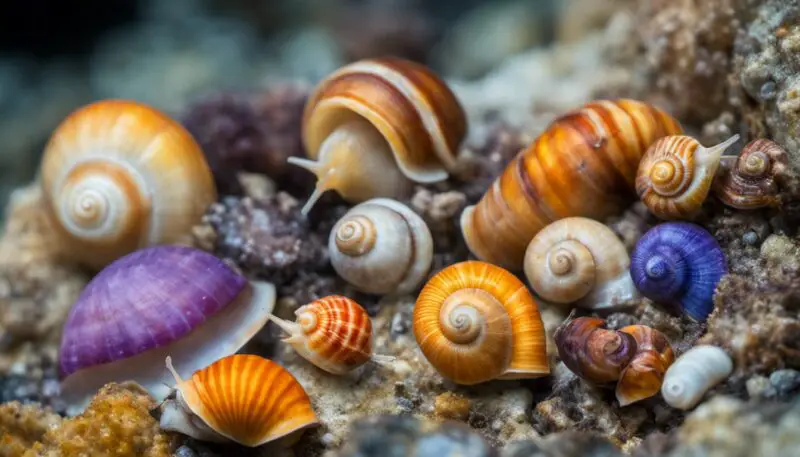
Land and Sea Snails
Snails are a diverse group of slow-moving mollusks belonging to the class Gastropoda. There are thousands of species of snails, which can be broadly classified into two groups: land snails and sea snails (or marine gastropods).
Land snails, like the common garden snail or the amber snail, rely on their muscular foot and mucus secretion to move across surfaces, whereas sea snails, such as whelks and sea slugs, use similar methods but are specially adapted to life in water.
As a general rule, snails are not fast movers. Most land snails have an average speed of about 0.03 mph (0.048 km/h), while some sea snails can swim or crawl slightly faster. For instance, whelks reach speeds up to 0.5 mph (0.8 km/h) using their muscular foot.
Comparison with Other Slow Animals
Compared to other slow-moving animals, snails still hold their own regarding slowness. Among land animals, snails are among the slowest travelers. For example, the average speed of a tortoise is around 0.2 mph (0.32 km/h), which is noticeably faster than most land snails. Sloths are famously slow and have a maximum speed of about 0.15 mph (0.24 km/h), still considerably faster than snails.
In the aquatic world, some sea slugs move at comparable speeds to their land-dwelling counterparts. However, it should be noted that the speeds of aquatic creatures can depend on water currents and other factors.
As a fun fact, the World Snail Racing Championships are held annually, where different land snails race against each other to be crowned the fastest snail. But don’t expect a nail-biting finish; the course is only 13 inches (33 cm) long, and the winning snails usually cover the distance in about 2-3 minutes.
In conclusion, whether land or sea dwellers, snails are among Earth’s slowest animals. Their slow pace is mainly a result of their unique anatomy and feeding habits. They don’t need to cover large distances quickly, as their food sources are mostly stationary or slow-moving.
Impact of Speed on Snail Behavior

Diet and Feeding Patterns
Snails are slow creatures, and their mobility plays a significant role in their diet. They secrete mucus to reduce friction between their bodies and the ground as they move. Because of their limited pace, snails primarily consume a diet of stationary food sources such as decaying matter, seeds, and young plants. This allows them to access their food without the need for speed.
You might notice snails feeding on various plants in your garden, extracting nutrients with their mouths. Their slow pace enables them to browse their surroundings thoroughly, ensuring they obtain the necessary nutrients to sustain their growth and development. Additionally, snails may consume calcium carbonate from various sources, which helps build and maintain their shells.
Reproduction and Lifespan
The speed of snails also affects their reproduction and lifespan. Due to their slow movement, snails reproduce at a more leisurely pace compared to fast-moving creatures. Their relatively long lifespan has evolved due to their limited mobility, allowing them to maintain their population.
Snails rely on chemical signals to locate and recognize potential partners when finding a mate. Their slow movement enables them to pick up these signals over extended periods, increasing the likelihood of encountering a suitable mate. Once the mating process is complete, snails lay their eggs in moist, protected areas, ensuring the safety of their young.
In conclusion, the slow nature of snails significantly impacts their behavior, particularly regarding their diet and reproduction. Their limited speed has shaped their feeding patterns and ensured a relatively long lifespan to maintain their population. In your garden, you can expect to observe snails leisurely consuming plants and other stationary food sources, reflecting their unique adaptations to life in the slow lane.
The Perspective of Science
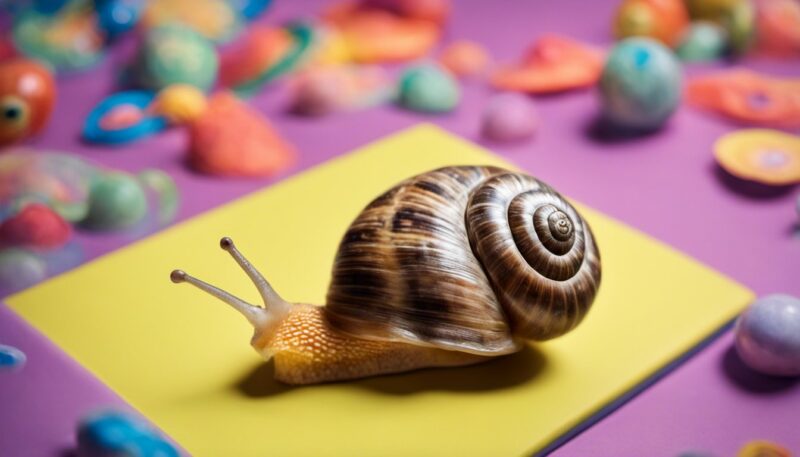
Physiological Basis of Slowness
From a physiological standpoint, one of the main reasons snails are slow is their unique method of locomotion. Unlike a cheetah, which relies on powerful legs to reach impressive speeds, snails use a muscular organ called the ventral foot for movement. Due to the absence of legs, snails rely on muscular contractions and secrete slimy mucus to reduce friction in their track.
Another significant factor contributing to their slowness is their low metabolic rate. Snails have metabolic rates that are about one-tenth of the rate of other similar-sized creatures. This reduced metabolism results from their physiology and allows them to survive for extended periods without food.
Evolution and Genetic Factors
The slow speed of snails is not only a consequence of their physiology but also a product of evolution. Over time, snails have evolved various characteristics, contributing to their slow-paced lifestyle. One such trait is their anatomy, specifically the limited number of muscles they possess. Having fewer muscles means they have less power to propel themselves forward, reducing their speed.
Snails also possess unique buoyancy adaptations, which allow them to maintain their position in the water and avoid sinking. This is an advantage in hiding from predators and conserving energy, but it also hinders them from achieving faster speeds.
Ultimately, the snail’s speed is a reflection of its overall lifestyle. Being slow allows them to remain hidden, which is essential for survival in the face of numerous predators. Their evolutionary adaptations and physiological characteristics have shaped their slow but effective mode of existence.
Conclusion: Why Are Snails Slow
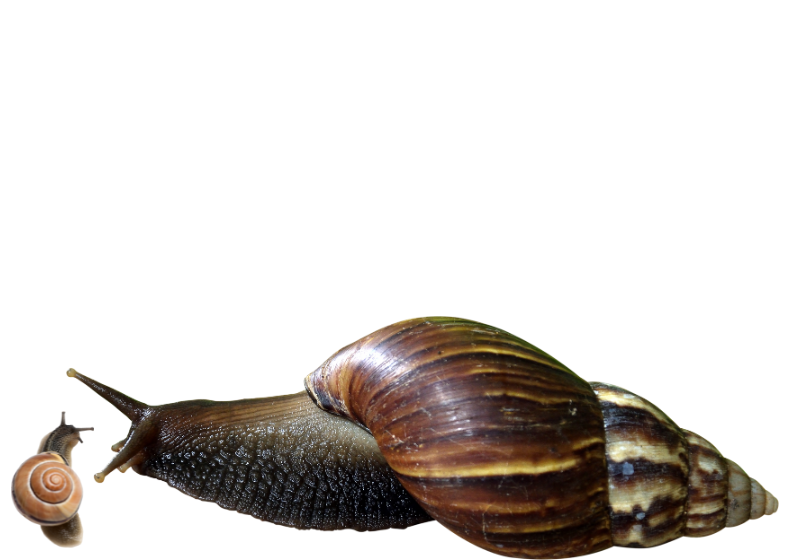
In summary, the main reasons snails are slow are their unique anatomy, energy conservation needs, and environmental factors. As you’ve learned, snails move at a slow pace primarily because they rely on a single muscular foot for movement instead of legs, and they need to secrete a slimy mucus to reduce friction. Additionally, their shells, made of calcium carbonate, add extra weight they need to carry, making it difficult for them to move quickly.
Another important aspect influencing a snail’s speed is its need to conserve energy. Due to their slow movement, they must find shelter during hot days and search for food, which involves consuming low-energy sources such as decomposing leaves. This forces them to utilize their energy efficiently, causing them to move leisurely. Furthermore, snails have evolved to move slowly to avoid predator detection, allowing them to rely on their hard shells for protection.
Considering all these factors, it’s clear that a combination of anatomical, survival and energy-conserving factors shape the slow movement of snails. Understanding these nuances provides valuable insights into these remarkable creatures’ role in the natural world.
Frequently Asked Questions
How does a snail’s anatomy affect its speed?
A snail’s anatomy plays a key role in its slow movement. Snails have a muscular foot that contracts and expands to move, lubricated by the mucus they produce. The rippling motion of muscles in their foot allows them to glide across surfaces but at a slower pace than many other organisms. Their spiral-shaped shells also add to their slow speed, as the weight and bulk of the shell slow their movements.
What factors contribute to a snail’s slow movement?
Several factors contribute to a snail’s slow movement, including their anatomy, diet, and the presence of predators. As mentioned above, their muscular foot and shell contribute to their reduced speed.
Furthermore, snails have a relatively low metabolic rate, requiring less energy, allowing them to rely on a diet of decaying vegetation and other slow-moving organisms. This low energy requirement enables them to move slowly without any significant disadvantages.
Do environmental conditions impact snail’s pace?
Yes, environmental conditions can affect a snail’s speed. Snails prefer damp, humid environments that provide ideal conditions for their mucus to keep their foot lubricated. They will likely move slower or seek shelter to retain moisture in dry conditions.
Additionally, temperature fluctuations can influence their speed, with snails being more active during cooler periods and less active during extreme heat or cold.
How do snails compare to slugs in terms of speed?
Snails and slugs both belong to the Mollusk family and share similar modes of movement, using their muscular foot to glide across surfaces. However, slugs lack the bulky shell snails carry, so they may appear slightly faster than snails. Despite this, both organisms have relatively slower speeds than many other animals.
Are there any adaptations that allow snails to move more quickly?
No known adaptations allow snails to move significantly faster than their typical slow pace. However, snails can climb vertical surfaces and move upside down, which can be advantageous in certain situations. The mucus they produce lubricates their movement and allows them to adhere to surfaces, showcasing their ability to navigate different environments despite their slow speed.
Is a snail’s speed an evolutionary advantage?
While a snail’s slow speed might seem disadvantageous, it is an evolutionary advantage in certain respects. Their sluggish movement allows them to thrive on a diet of decaying vegetation and other slow-moving organisms, minimizing resource competition.
Their slow pace also helps them avoid attracting attention from predators. Additionally, their spiral-shaped shell protects from weather and predation, making their slow speed a trade-off for increased survival in their preferred environments.

